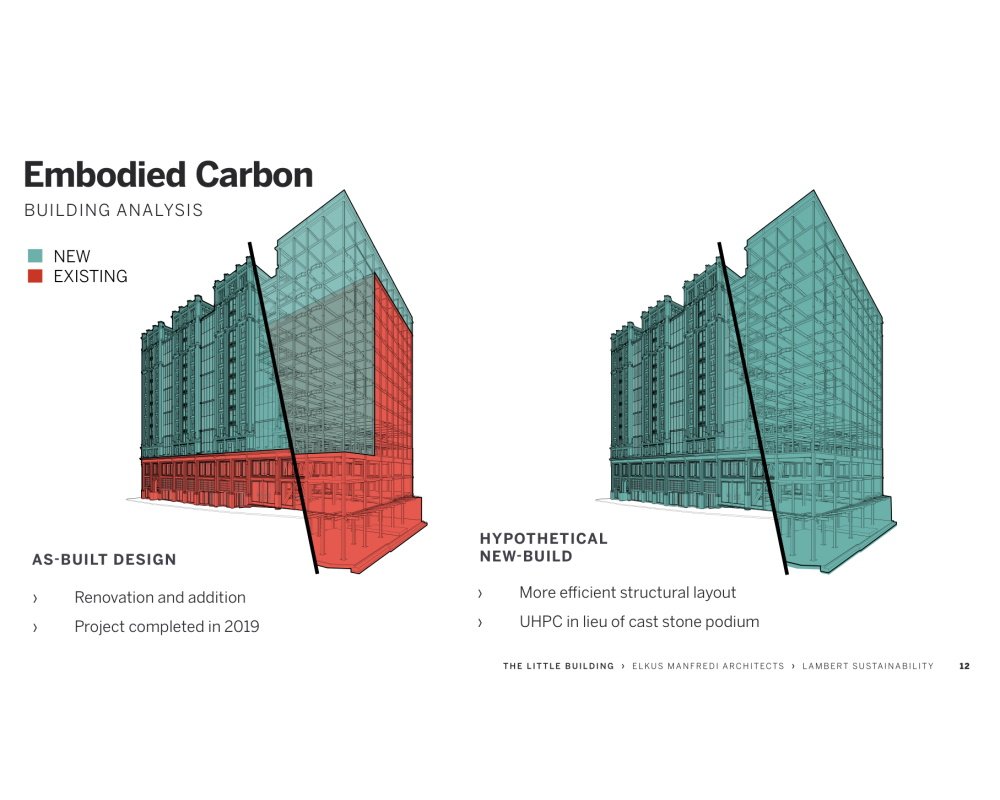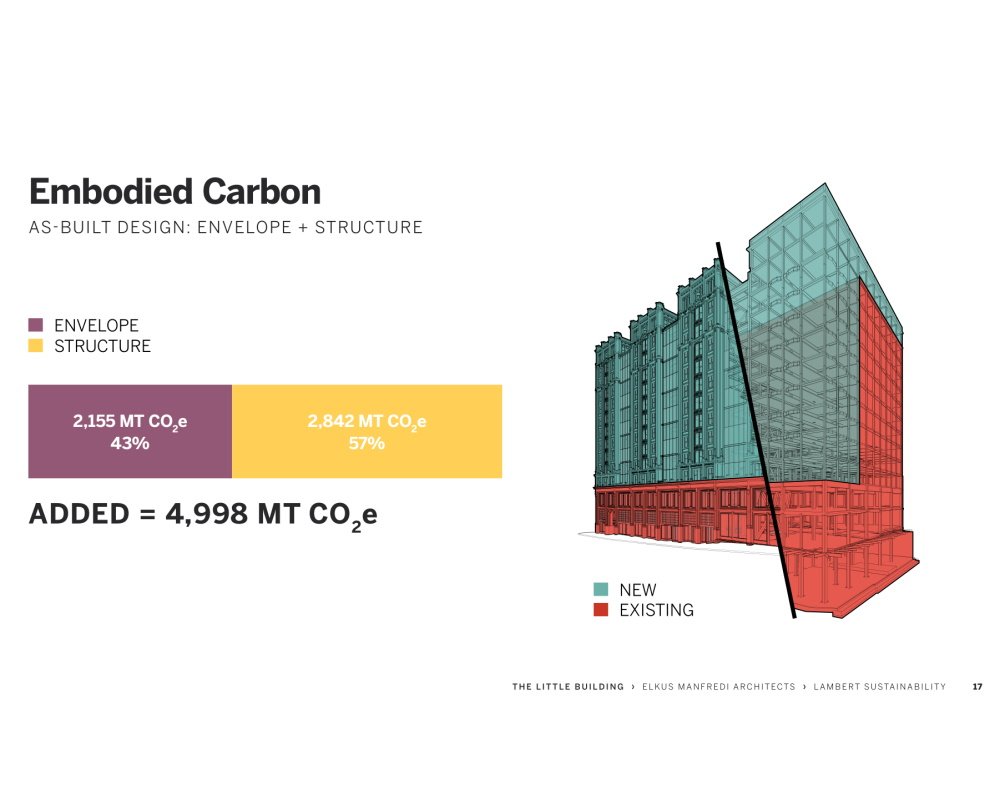Embodied Carbon Analysis of the Historic Emerson College Little Building
Preserving an historic building is an important way to celebrate the culture and character of a community, but there is value in preserving structures beyond their historical significance. Adaptive reuse of existing buildings is also a sustainability tool in the fight against climate change. Reusing buildings rather than replacing them can be a powerful strategy for reducing embodied carbon and creating near-term impacts in carbon reductions.
Lambert Sustainability partnered with Elkus Manfredi Architects in 2020 to undertake a post-construction embodied carbon analysis of the Emerson College Little Building historic building retrofit project. The goal of this analysis was to quantify and understand the embodied carbon in the existing building materials, as well as the comparison between two potential scenarios: reuse versus teardown and rebuild.
Work presented at ABX Boston Conference, Dec 2, 2020 “Building Reuse is Climate Action” and at the Boston Society for Architecture (BSA) Matter & Opinion Series: Existing Buildings, July 19, 2021, “Panel Presentation, Existing Buildings: Student Life- Little Building Embodied Carbon Study”.


